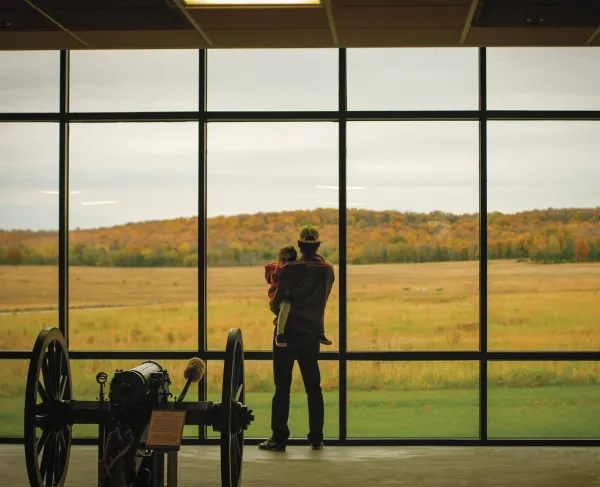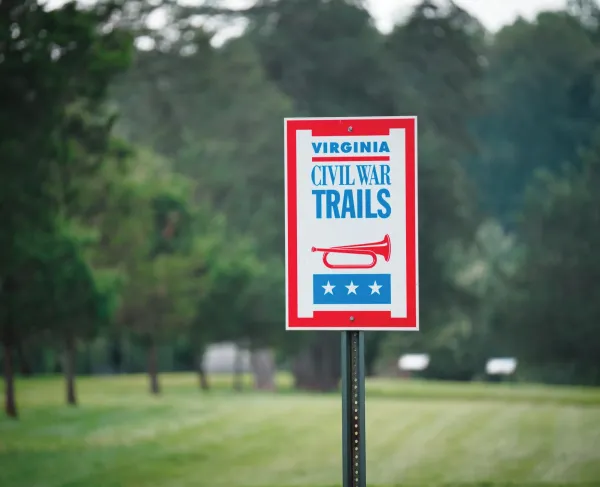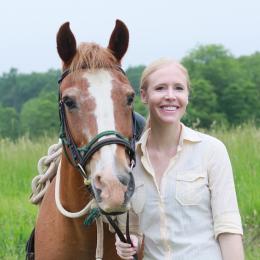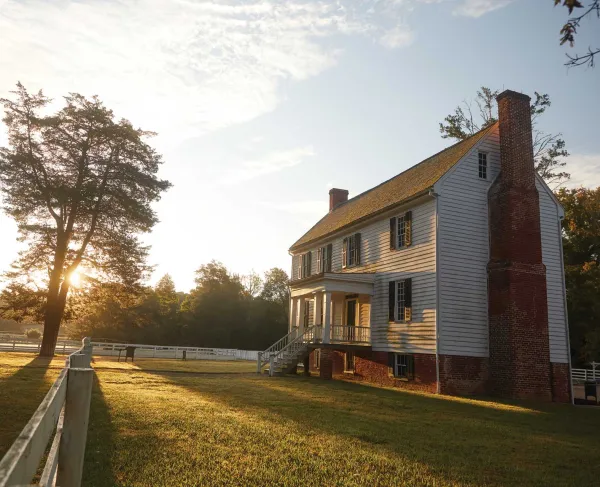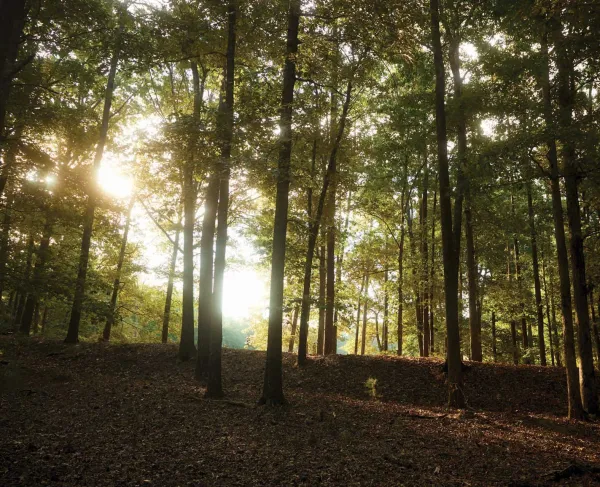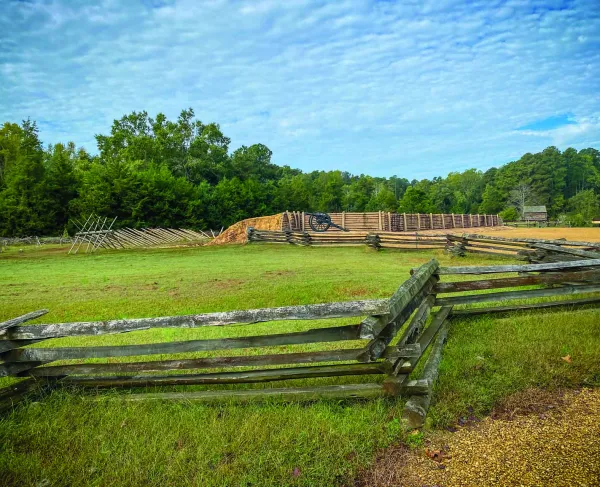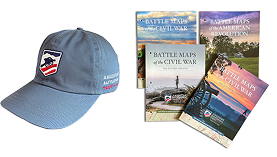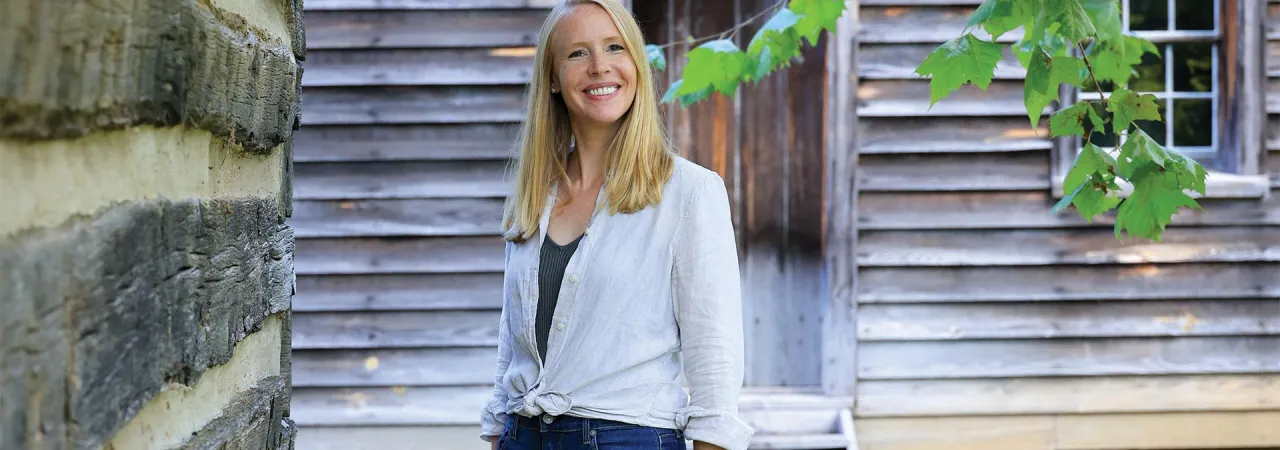
Darley Newman at Guilford Courthouse National Military Park, Greensboro, N.C.
Creating an entertaining and inspiring TV show is more than just capturing images. It’s about discovering passionate people who can guide the story. Through my travels, I’ve learned that when you genuinely inquire, people eagerly share their authentic experiences. In the brief time we have with our experts during the filming of each segment of my long-running PBS and streaming series, Travels with Darley, their revelations have been captivating and moving. Through their lens on location, I’ve experienced “the power of place” and why traveling to these locations is so important.
You have to be there to immerse yourself in the experience and feel the energy emanate from the powerful stories told by those who have lived through history or those who devote their lives to keeping knowledge alive for future generations. My Travels with Darley crew and I have traveled the world for more than a decade and a half —from the far reaches of Botswana and Japan to battlefields and parks in my own backyard of New York City. Across countries with WWI and WWII history to states with Revolutionary War, Civil War and Civil Rights history, we’ve filmed more than 93 half hours of Travels with Darley, plus my other series Equitrekking and Look Up. That’s a lot of on-location interviews!
Over the past three years, we’ve focused on mixing travel with American Revolution sites in the lead up to commemorating the 250th anniversary of the founding of our nation. Untold and lesser-known stories of the American Revolution have been at the forefront of the Travels with Darley: Revolutionary Road Trip series. Through oral histories and cataloging new developments, we’ve traveled my home state of South Carolina, as well as Virginia, North Carolina, Delaware, New Jersey and New York —with more in production this year and next.
With each destination that we are fortunate to visit and film, I’m more and more convinced by the power of place and the power of authentic storytelling to convey why history and historic places truly do matter for us all. The people we film with are often guides, business owners or locals you might encounter when visiting these places. Here are just a few of the places and people we’ve met and cherish.
Camden Battlefield
Former soldier and military historian Rick Wise led us through Camden Battlefield in South Carolina. He stands out in a recent segment that moved me deeply, a sentiment that has never really left. When you’re standing on hallowed ground, you would think that it would resonate, but at a location like Camden Battlefield, there are not always as many visuals to reveal the true depth of the story. Rick changed that for me and the audience of our “South Carolina Revolutionary Road Trip” episode. At Camden Battlefield, Rick and I walked along sandy trails among the lodgepole pine trees as he shared what the little white flags in the ground were marking. Recent archaeological excavations at Camden Battlefield have revealed more about the hundreds of soldiers laid to rest here.
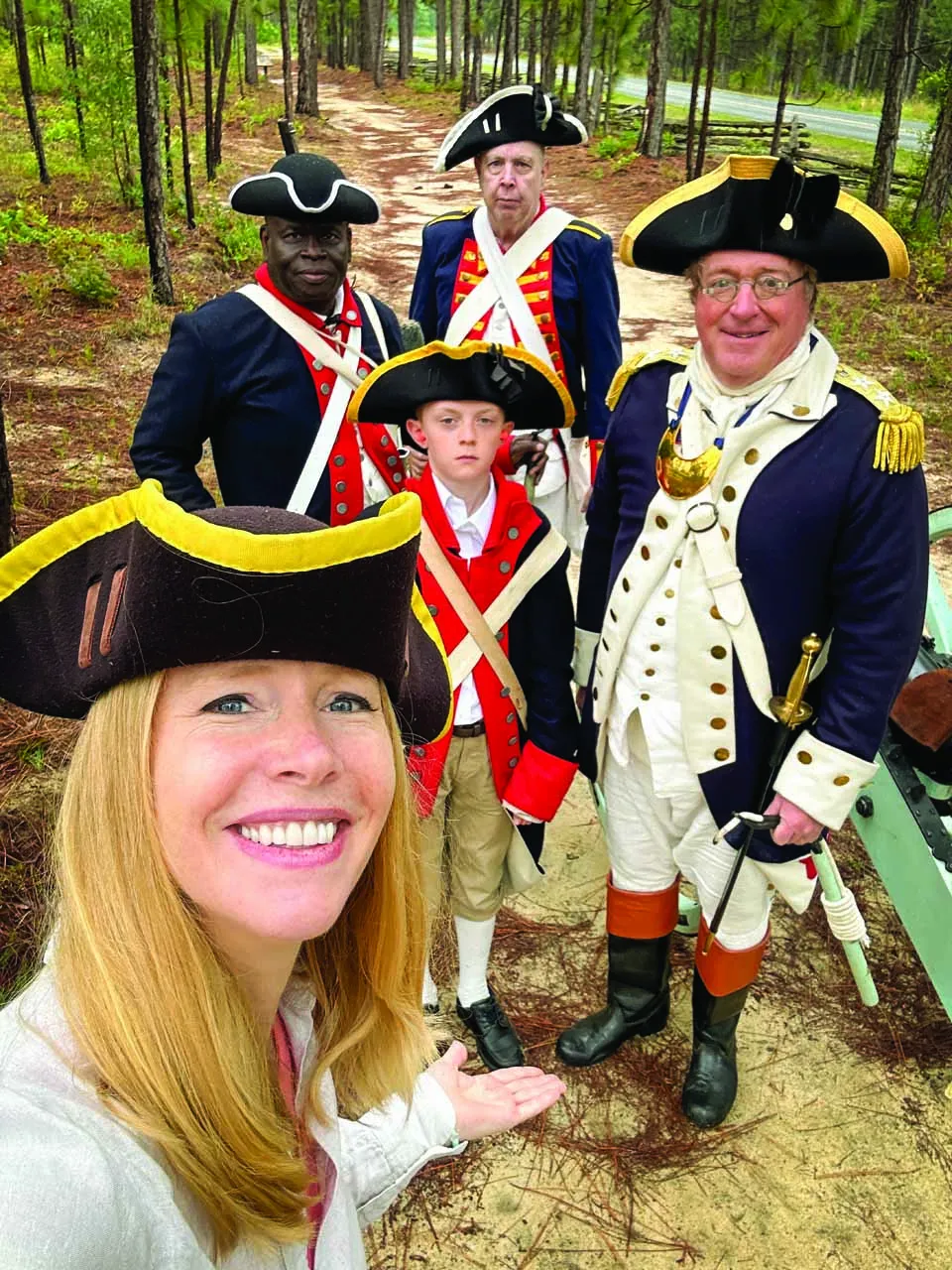
“Over here are the graves of five Continental soldiers who were buried together. I can envision these guys probably back-to-back guarding each other as they tried to fight these men off until they all went down. And then they were buried in a common grave. The sacrifice they made was remarkable,” Rick said.
“A lot of our independence and liberty that we have today was the result of the sacrifice of these five men recovered here at the battlefield at Camden. I was a soldier for 23 years. And when I come out here… I commune with these guys… What took place here is very humbling to me when I think about the soldiers and the sacrifices they made.”
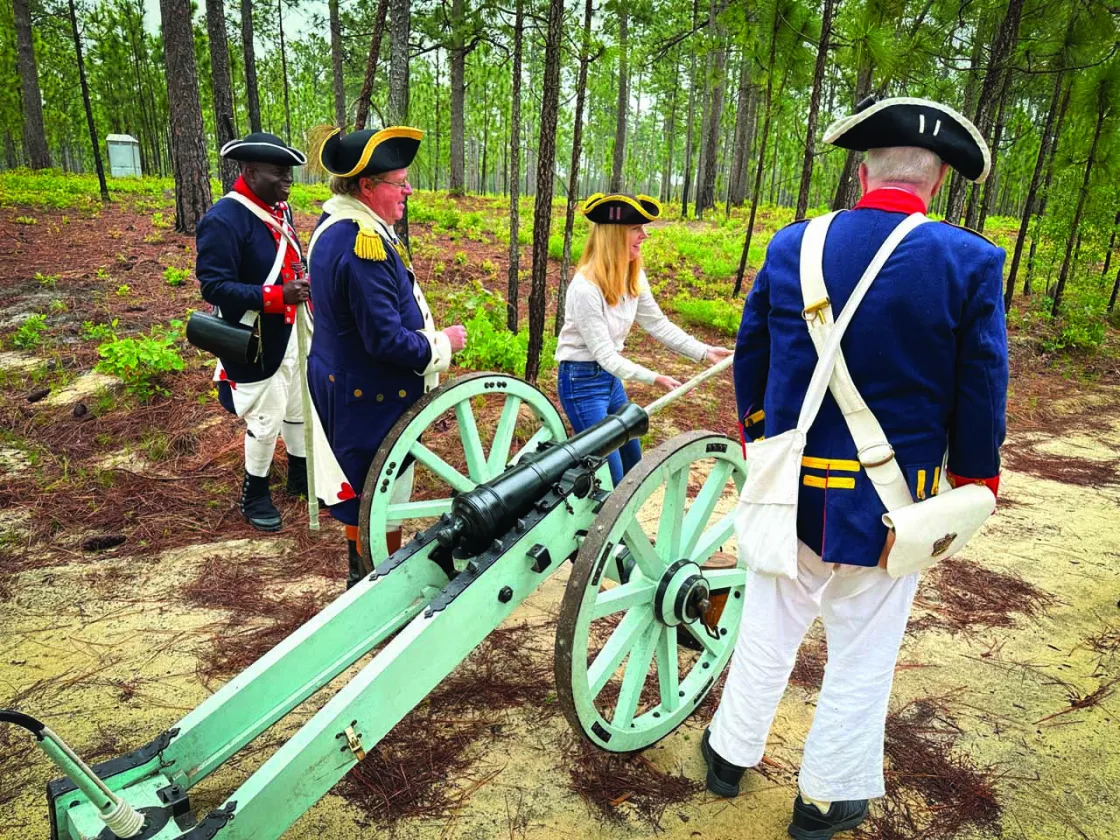
As Rick spoke, I couldn’t help but think about how many of us are either related to or know someone who has served. Rick’s story and his vulnerability in sharing it would strike a chord with many, including me, who could themselves relate to being a soldier or knowing one as a father, sister or friend. My dad served as a captain in the U.S. Army. My grandfather served in the Navy during WWII alongside his brother, who was buried at Arlington National Cemetery with military honors. Since this segment broadcast, we’ve heard from many people, who reached out to share their connections to Camden Battlefield and how the segment made them feel. That connection to history and a place can bring us closer together. By being brave enough to share his feelings, Rick made being on Camden Battlefield that day even more poignant.
Fort Fair Lawn
On a hot September day in 2023, we filmed at Fort Fair Lawn in Moncks Corner, South Carolina. Between takes, we fanned ourselves with paper film releases while surveying the site — a British-built earthen redoubt that saw 32 battles during the American Revolution. Greg Barna, our director of photography, paced the site with me, struggling to capture its essence.
“I don’t know what you want me to do with this,” Greg said, adjusting his worn Mendham Far Hills Steeplechase cap and wrinkling the corners of his gray mustache. He hails from the state of New Jersey and has traveled with me since the beginning of my Equitrekking series, which took us around the world on horseback. “Hopefully, there are some maps or something we can use for images.”
Greg is a master of framing — he can make a lone flower in a barren field appear like the heart of a scene. He knows how to tell the story of a place, frame its power even when the visual clues are scarce. You’ll watch our show and think, “Wow, that’s gorgeous.” On location, you wonder if you would have spotted that flower or twig in the corner of the TV frame. At Fort Fair Lawn, like some other battlefields, ancient ruins and even historic homes, the modern visuals don’t always give a lot of hints to the past story unless you truly know the context. That’s where shows like ours enlist local experts like David Reuwer.
He had David and me walk in the woods further outside the fort, then across a small bridge over a moat and into the interior of the earthen fort and talk as we did so. Movement always helps the viewer stay engaged during conversations. As we walked, David started to share more of what we would have seen in the 18th century.
“Darley, welcome to a British redoubt, built in 1780 after the British captured Charleston. These are the extant walls — earthworks — that would’ve stood nine feet high above a six-foot-deep moat.”
“It’s amazing this was made of dirt and lasted over 230 years,” I said.
David nodded. “That’s what makes it exciting. There aren’t many like this still intact. The Cooper River was nearby — they’d bring troops 30 miles upriver, then head inland. Half a mile from here was Biggin Church, turned into a supply depot. This was their forward base.”
“So, the British had this area pretty well locked down,” I said, staring at the now overgrown earthen mound.
“Right,” David replied, nodding exuberantly.
That afternoon as David recounted what happened at Fort Fair Lawn — sometimes in too much detail for a half hour PBS travel series — I was able to not only visualize what Fort Fair Lawn may have looked like but also understand even more clearly its strategic location in the greater context of the Southern Campaign and the American Revolution. It wasn’t just learning the history though, it was the spark in his voice as we stood on the very ground where it had all taken place — making the story come to life and making Fort Fair Lawn matter.
Selma, Alabama
It’s personal stories that bring history to life, and this was no more evident than on my trip to Selma, Alabama, in September 2021. During the pandemic, we had to take a hiatus from filming, but we were able to hit the road again shortly after the first vaccines were released. We were excited to get back out there, but once we started to travel again, we found it extremely challenging. It was at this point when I wondered if it was worth it to continue to push through and keep making my series. Joanne Bland put me back on course.
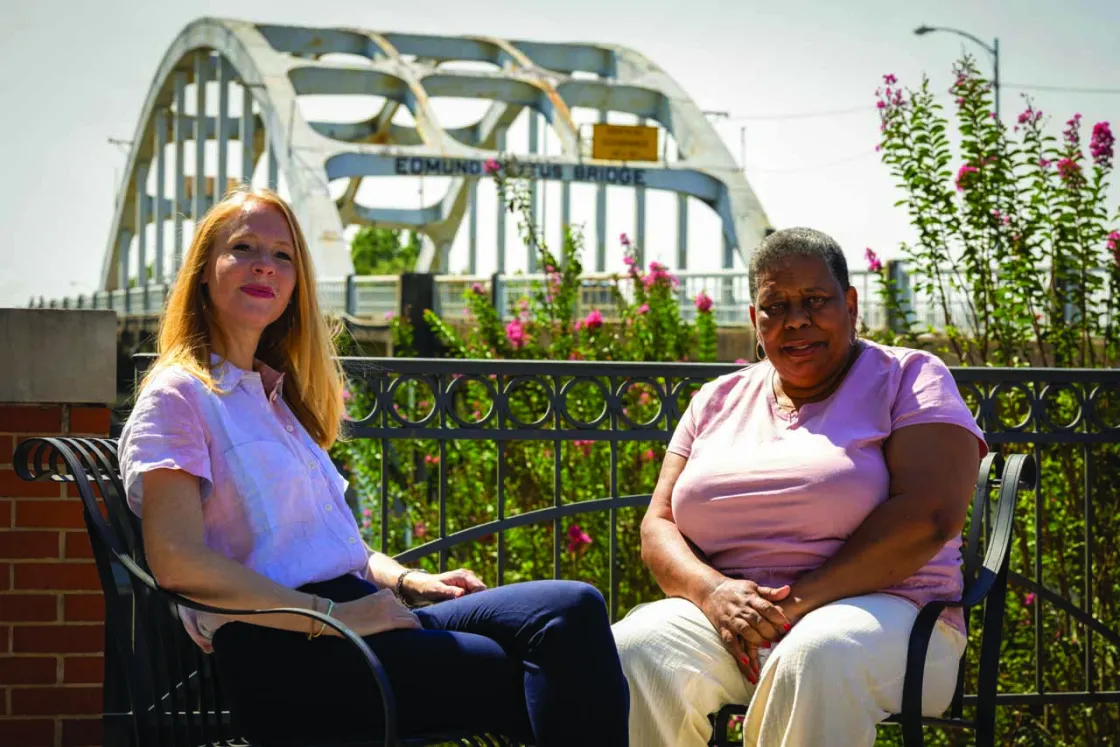
Joanne Bland marched as a child in the Selma to Montgomery March during the Civil Rights Movement. Joanne has shared her story many times over the years as a tour guide in Selma. She would let us record it that day in September. Since we were conducting all our interviews outdoors, we sat down with her at the base of the Edmund Pettus Bridge, wrestling with filming in the heat and amid the noise of trucks going by on the nearby road. Many people drive over this bridge and don’t realize it is a living monument and monumental in the role it played in the Civil Rights Movement.
Amid the somewhat chaotic and iconic environment, Joanne recounted once again what happened when she and her sister tried to march during what would become known as Bloody Sunday on March 7, 1965. John Lewis was leading hundreds of people over the Edmund Pettus Bridge in Selma. They faced brutal beatings and attacks.
“They came in from both sides, the front end and back and the horses,” Joanne said as we sat across from each other.
“I remember people falling down and laying, bleeding, and not moving,” Joanne said. “We tried to get back across the bridge… The tear gas was there and this big cloud… The next thing I remember I was right across the street in the back of a car. And my head was in my sister Linda’s lap, and Linda was crying. When I became fully awake, I realized … she had been beaten on the bridge … had wounds in her head that required 35 stitches — 28 in the back of her head. And seven over her right eye.”
Joanne would continue to share that she would go on to take part in the Selma to Montgomery March later that month, making it to the steps of the Alabama State Capitol in Montgomery, a turning point in the Civil Rights Movement.
I asked Joanne how she bears to continue to share this story over so many years.
“I’m proud today that I did do it, and I’m proud that I was a part of that. And I think it’s important that we tell our own stories. And it’s a whole different ball game when you’re walking with somebody that was there. And they realize it wasn’t that long ago, that we still have mountains to climb.”
Hearing Joanne’s story that day at the location where it happened made me cry. She had been just a child. I don’t normally get choked up when we’re filming, as I try to be casual but professional and perhaps sometimes reserved in my interviews. I want the people we speak with to be the story and feel empowered to share their story. They sometimes, like Joanne, lived the story, making them the best people for us to learn from. Hearing her share what she’d been through and survived at the location where it all happened was heart-wrenching, and yet her tone was also filled with hope.
It made me proud that day that I could meet Joanne and document her voice firsthand so it would live on to perhaps inspire others to learn about the past to chart a better future. Joanne’s story at the foot of the Edmund Pettus Bridge continues to resonate with me, and it’s one of the reasons I continue to travel and film.
Manassas National Battlefield Park
While many historic sites have brought history to life, some also re-instilled the need to protect these places for other reasons. Located about 30 miles outside Washington, D.C., Manassas National Battlefield Park dates back to 1940, and being so close to Washington, D.C., means it is under constant threat of development. On my visit to this national park, I couldn’t help but be struck by the number of locals out utilizing Manassas for recreation — walking their dogs and running the trails. I asked Ranger Liz Hokanson about this.
“We’re kind of in an oasis in the middle of Northern Virginia sprawl. For a lot of people, this is a nice quiet place to come and reflect and think and just get out and enjoy nature and commune with nature,” Hokanson said. “While many people come here to learn about history, others come to enjoy nature and open spaces.”
As I listened to Liz’s interpretation of both Battles of Bull Run and the significant number of casualties — more than 20,000 — as well as the chaos and confusion faced by the soldiers trying to identify friend or foe among 200 or more uniforms and flags that looked pretty similar, I found it difficult to juxtapose that with today’s tranquil park. At a time when so many of us need places and spaces to unplug, my time at Manassas National Historical Park with Liz solidified the need to protect these places, which protect the power of place and provide open space for people.
Guilford Courthouse National Military Park
The power of place can also help us understand the struggles of our nation over time and at times even evoke patriotism. One such place is Guilford Courthouse National Military Park in Greensboro, North Carolina. Superintendent Aaron LaRocca shared how the park helps to keep American Revolutionary history alive for future generations.
“The Guilford Courthouse National Military Park would be this destination for patriotism, allowing North Carolinians to reconnect with their patriotic history. The Greene Monument that was placed here in 1915 is dedicated to the North Carolina signers of the Declaration of Independence,” Aaron said as we walked across the brick sidewalk and toward the imposing statue, the largest in the park.

“So, two of the three signers of the Declaration of Independence from North Carolina are reinterred here. That was part of the idea of this kind of patriotic destination,” said Aaron. “But we also have the visitors who come here for that Revolutionary War story, who want to understand the history of the Revolutionary War as it happened as part of the Southern Campaign.”
Aaron was sharing both the U.S. and state pride that can be felt when you visit a site like Guilford Courthouse National Military Park. It’s a place’s power to propel a sense of pride, and he shared that sentiment beautifully.
These are just a few of the deep connections we’ve experienced with people across the United States at historic battlefields and places currently being preserved. I feel fortunate to have visited so many and to share them across so many diverse mediums, so that other people can experience them and perhaps be inspired to visit them, too.
Each adventure and challenge and each new story drives me to uncover more, because in doing so we can understand our past and each other in a more complete way. Preserving these places is essential for this exchange. When we recognize how these places and stories can unite us, I believe we become better people. Our earth has nooks and crannies filled with stories of our past — if we only take a moment to look and listen.
